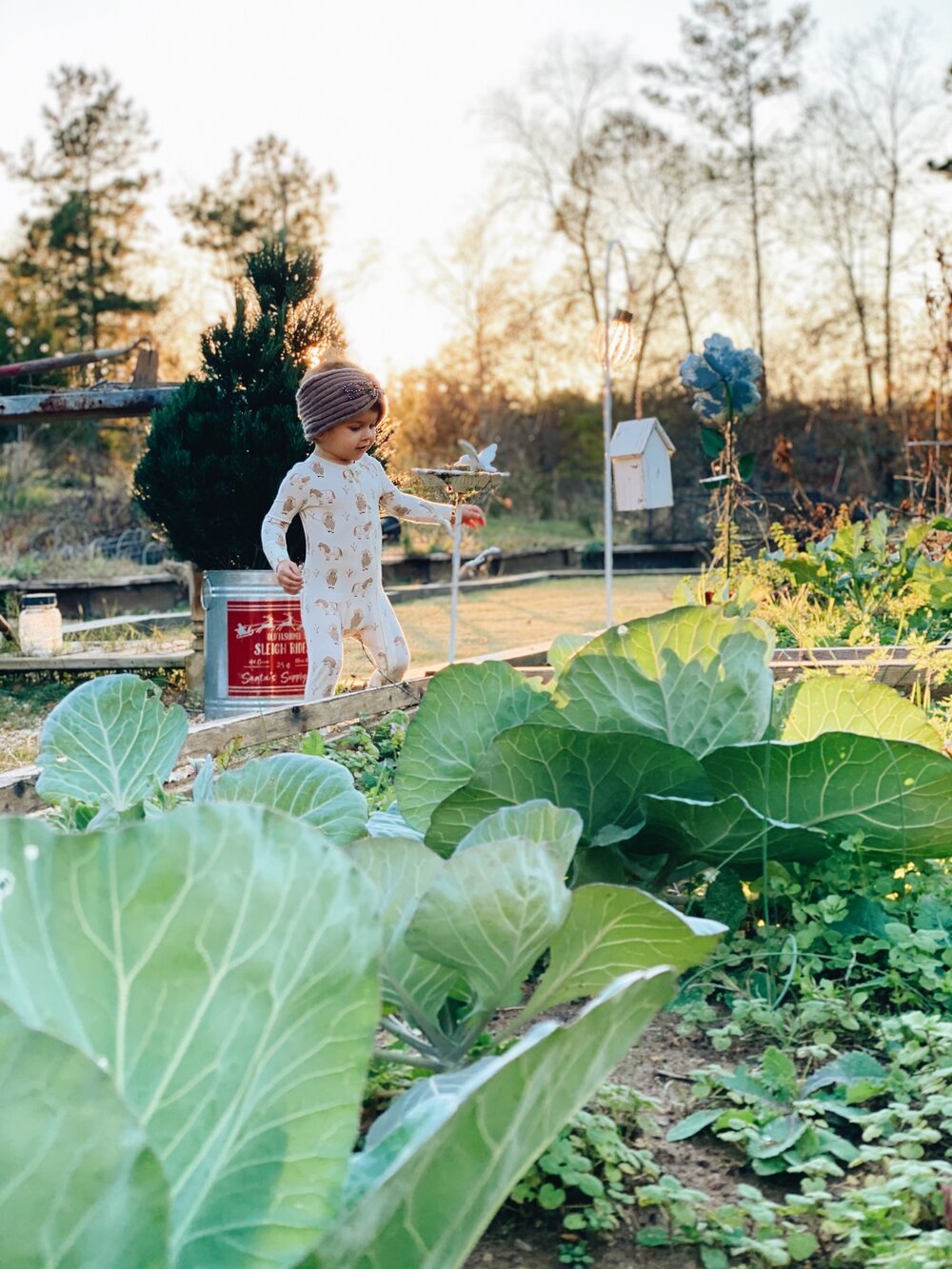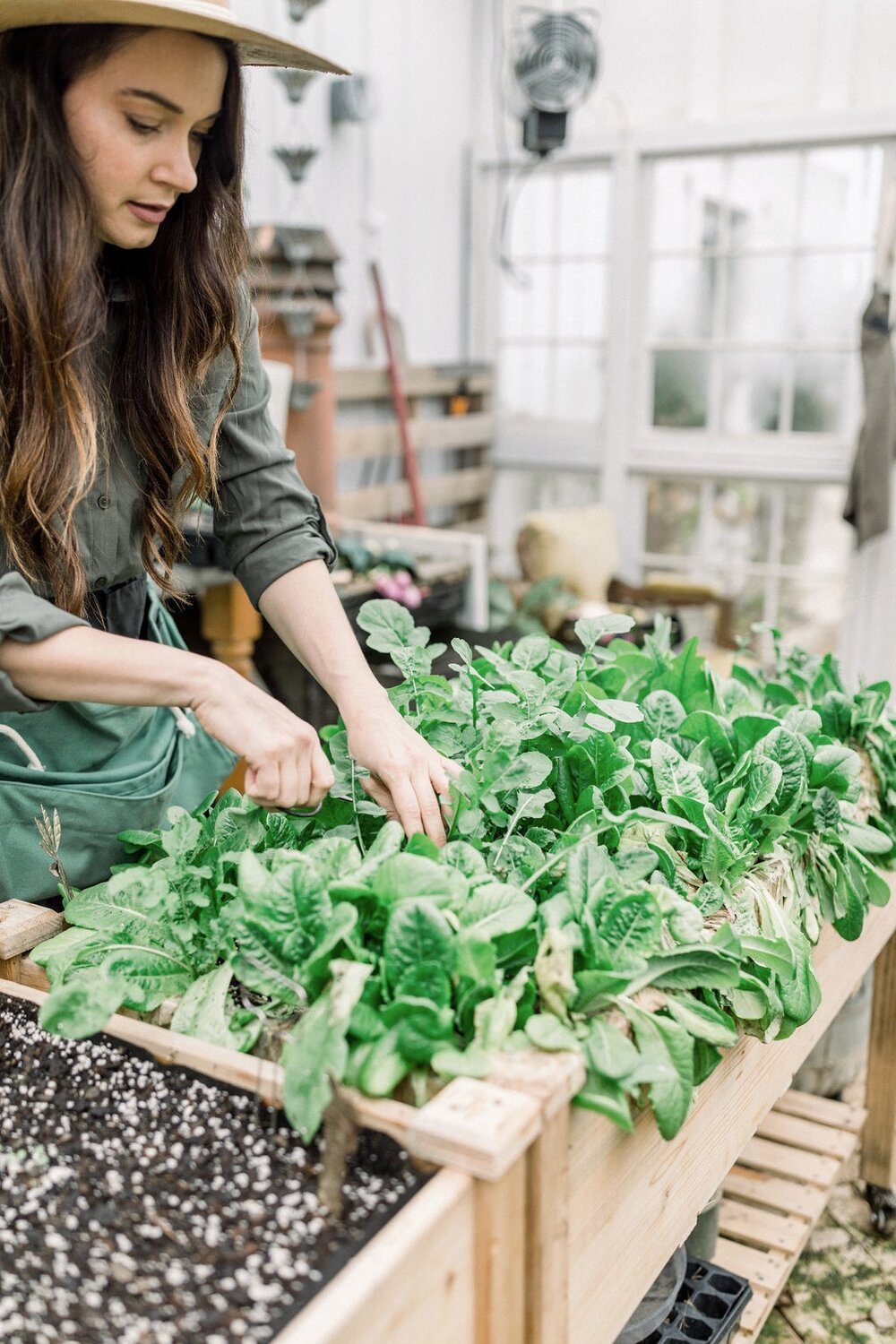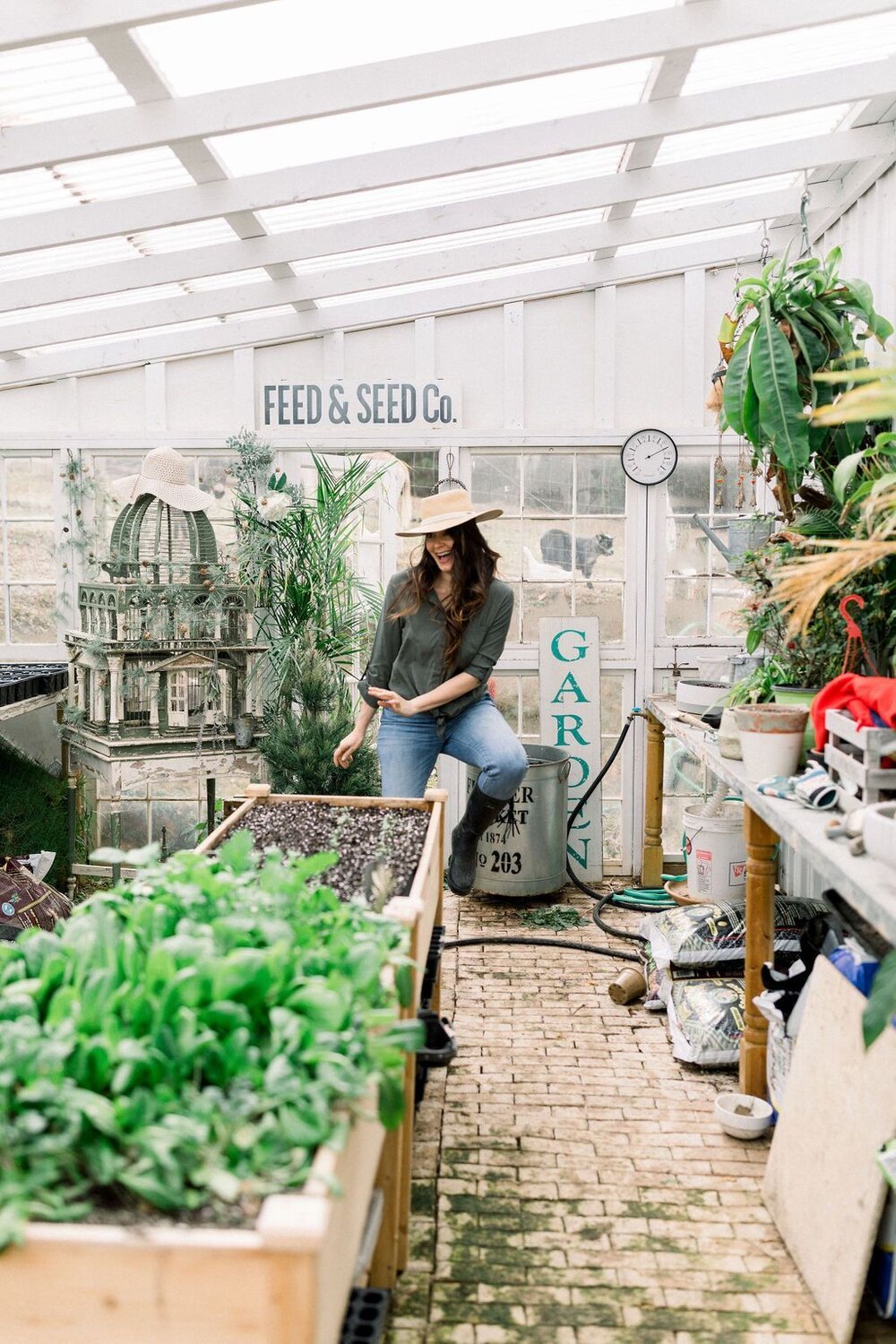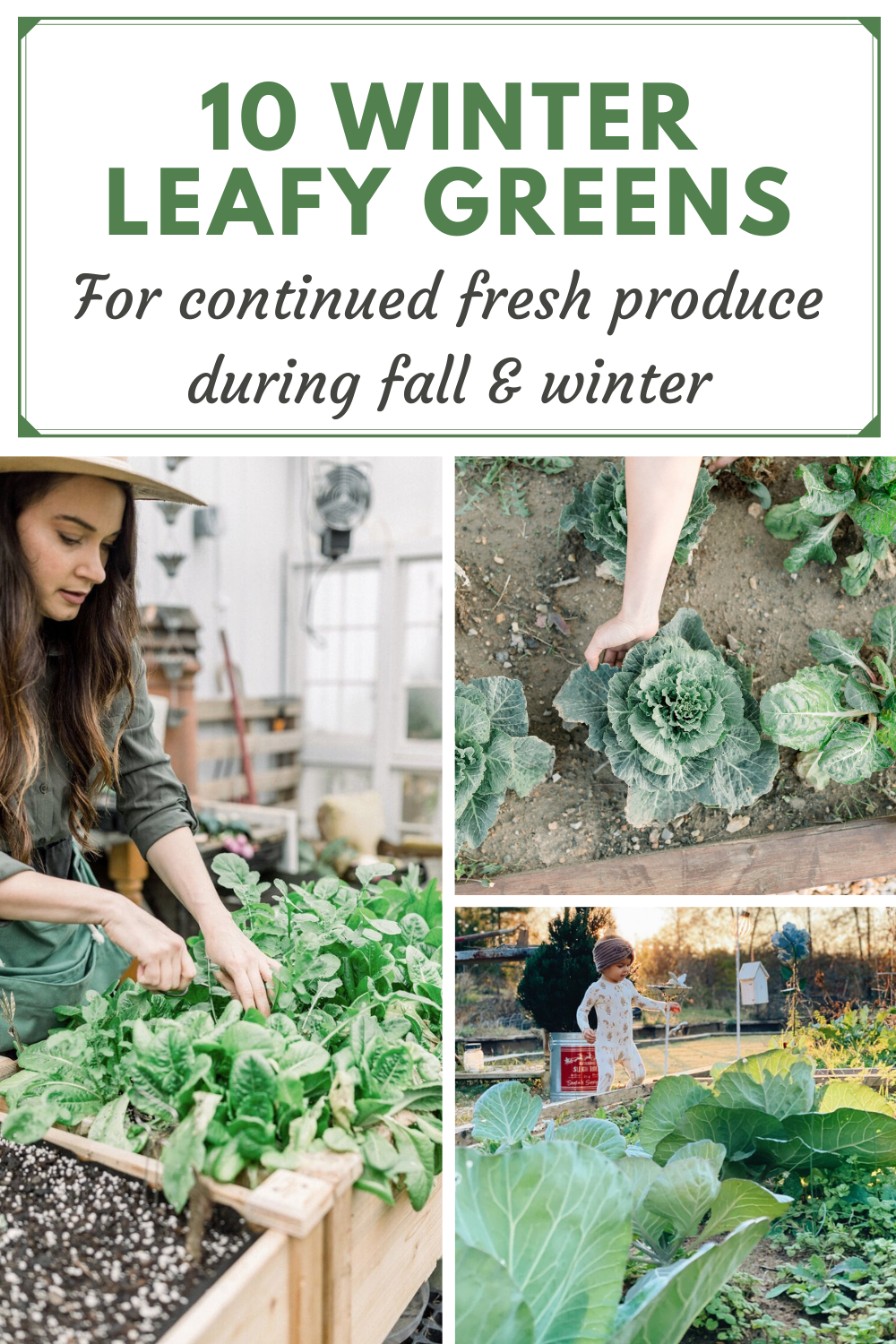10 Winter Greens You Can Plant To Have Fresh Produce During Fall And Winter
Fall might be here, and winter is well on its way, but that does not mean you must put those garden tools away!
You can still enjoy fresh produce from your garden, such as winter leafy greens.
The cooler temps and even frosty nights are often the ideal conditions for many winter leafy greens! They thrive in cold temperatures, often grow much better, and can grow deep into winter.
Cold snaps and freezes will turn the starch in leaves into sugar, making them noticeably sweeter and crisper!
Here are 10 winter leafy greens you can plant in late summer and during fall so you can still enjoy fresh produce during the colder months!
10 Winter Leavy Greens
These winter leafy greens love the colder weather, prefer cool soil, and should be planted in the fall.
1. Arugula
Arugula is a favorite winter green of mine with its spicy and peppery flavor. It is quick-growing, frost tolerant, and hardy to 28°F.
You can harvest two main varieties in winter; wild and garden. The wild arugula grows slower but is more cold-tolerant. In contrast, the garden varieties are quick growing but less cold tolerant.
Arugula seeds need soil temps of at least 40°F and could be sown until late fall. It will grow best in a minimum of 6 hours of full sun or by a window with lots of direct sunlight. You can harvest baby leaves within a month of sowing and 6-8 weeks for mature leaves.
READ MORE: Roasted sweet potato and arugula salad
2. Bok Choy
Bok choy is an annual Asian green that is a type of Chinese cabbage. In the winter, they will grow in zones 4 through 7 when protected from frost with a winter frame or garden fleece.
Bok choy should be planted in early fall when temperatures are cooler. It will continue to grow after a light frost, and you can harvest bok choy when the leaves have matured.
3. Cabbage
Hardy varieties of cabbage, such as savoy cabbage, grow well into winter. Like many cold crops, their taste will improve with a light frost.
For colder climates, you should plant cabbage outdoors in mid-summer, and for warmer climates, you could plant them in early fall.
It would be best if you protect young cabbages against an early frost with covers. If you expect extreme cold, harvest cabbages in early winter. If you don't get extreme colds, cabbage can grow in temperatures as low as 20°F.
4. Collard Greens
Collards, a member of the Brassicaceae family, are the most cold-hardy of all the Brassica species. They are frost tolerant and can survive temps down to the upper teens.
Collards are tastier after the first frost, and you can continue to harvest them even after the leaves have frozen. They will generally overwinter in zones 8-10 and may even survive winter in colder zones when it is a mild year.
Collards should be planted in fall, ideally 6-8 weeks before the first frost, in a spot with a minimum of 4-5 hours of sunlight. They will be ready to harvest after the frost.
5. Mizuna
Mizuna, also known as Japanese mustard, has a mild peppery taste. It is also part of the Brassicaceae family and is a cross between arugula and mustard.
Mizuna is fast-maturing, cold-hardy, and tolerant of low light levels, ideal for winter growing. Their seeds germinate in the soil down to 40°F and can survive very low temperatures. It will continue to grow in temperatures of 45 to 75°F.
Plant mizuna in a spot with full sun and where you haven't grown any brassica varieties in the past two seasons. Mizuna is not that common, so search for the seeds online or at big nurseries - it will be worth the effort!
6. Kale
Kale is part of the Brassica family (see a trend here??), a type of cabbage that doesn't form a head and has green or purple leaves. Dinosaur kale, Red Russian, and curly kale with dark-green, frilly leaves are the most well-known varieties. Kale will especially be tastier after growing through a heavy frost.
Kale thrives in the cold winter and can tolerate temps as low as 5°F without protection. It needs a minimum of 6 hours of sunlight and soil temps of 65 to 85°F to germinate and sprout.
You can start harvesting within 30 to 60 days, depending on the variety you choose and if you prefer baby or mature leaves. Kale will go dormant when temperatures dip below 20°F.
7. Spinach
Many spinach varieties will grow in the winter for zones 3 - 9 and can tolerate temperatures as low as 20°F.
In zone 6 and up, spinach will overwinter without added protection, and in colder areas, you should cover it when a deep freeze is expected. However, plant your spinach under a row cover, cold frame, or greenhouse for the best results.
Spinach should be planted 4-6 weeks before your first frost date as it grows best when it has reached maturity before the first frost. If you direct sow them outside, the temps need to be above 40°F, although 50 to 75°F is ideal.
You can expect growth to slow once temperatures drop. But if you protect it through the most frigid weather, spinach will start to grow again when the days begin to lengthen in February and March.
READ MORE: Garden fresh pesto pasta
8. Swiss chard
Swiss chard is another cold-hardy leafy vegetable with long leaves and is part of the Amaranth family, like spinach. Rainbow swiss chard adds great color to your garden with its burgundy, pink, orange, and white stalks and leaves.
Swiss chard seeds prefer warm soil to germinate, ideally 75 to 90°F. So you need to plant them in late summer to early fall or start them in a greenhouse.
They also prefer a minimum of 6 hours of direct sunlight. You can begin to harvest the leaves after 4 weeks or 8 weeks for mature leaves.
9. Watercress
Watercress is an aquatic perennial with a mild, peppery flavor that is cold-hardy down to Zone 5. It can tolerate temps as low as 5°F and will often continue to grow all through mild winters.
It can be grown in the garden if you keep the soil constantly wet. A thick mulch will help retain soil moisture. Watercress also grows in water about 2in deep with an optimum pH of 7.2.
Sow watercress seeds in fall in soil that is 50 to 60°F. Begin harvesting a few weeks after seedlings emerge, cutting the plants back to a few inches in height.
10. Winter lettuce
Lettuce is hardier than one would think, and it will survive cold and light frosts without protection when sown at the right time.
Sow winter lettuce seeds or plant seedlings in the garden from August until around November, depending on your zone and conditions.
Lamb lettuce, often called mache or corn salad, has small rounded leaves with a mild nutty flavor. This plant is extremely cold-tolerant and can even survive under snow. Other winter lettuce varieties include 'Winter Marvel,' 'Winter Density,' and 'Brune d'Hiver.'
In zones 4 - 5, it is best to plant cold-hardy lettuce varieties, and in zones 6 - 7, any lettuce will grow well as long as they are protected from frost. Even types sold as cold-hardy will require a cloche or indoor protection if the temps are very low or frost and snow are expected. They are tough, but not that tough!
Tips For Growing Winter Greens
Seeds or seedlings?
Seeds are fun as you participate in the growing process, from germination to harvest, but it does take more time. Seeds should also be sown in early fall, so they have enough time to settle before winter hits and that the roots don't freeze.
With seedlings, you get a head start by a few weeks and don't have to worry if seeds will sprout. When starting with seedlings, you may have fewer options to choose from.
READ MORE: Seed starting basics
Consider starting them inside
If you are late to the growing party, you need to start seeds indoors as they need plenty of warmth to germinate. Sow seeds indoors, in your greenhouse, cold frame, or even in pots on a windowsill. Make sure the area receives plenty of sunlight and has good air circulation.
READ MORE: How to design the perfect greenhouse
Harden your plants off
Once your winter leafy greens are settled - about 9 to 12 inches tall with at least four leaves - they can handle colder temperatures. Place the pots outside near a wall to chill and sweeten. Growth may slow down a bit due to the colder temperatures, but that's okay! Bring your pots inside at night or when there is a risk of frost and severe cold.
Once the plants are adapted and a good size, you can leave them outside if the temperatures stay around 28 degrees and above. Once again, bring the plants inside when temperatures dip lower than 28 degrees, or you expect icy conditions. You could also cover them with a cloche or garden fleece.
READ MORE: What does it mean to harden off plants? The what, why, when, and how!
Plant them in the right spot
If you want to transplant your seedlings in garden beds, plant them in a sheltered spot that still gets a lot of sunshine.
One of the most crucial factors for a successful winter garden is the amount of sunlight. Growth will become dormant when there are less than 10 hours of light a day. So colder areas with less daylight should plant winter leafy greens in late summer to be ready to harvest in early winter.
The soil should also have proper drainage as young seedlings may freeze in water pools.
Protect them if needed
During winter, the soil should still be warm enough so the roots don't freeze.
When you expect icy weather conditions, you can protect the plants with techniques and materials to keep the soil from freezing. Hoop houses, cold frames, cloches, garden blankets, and thick mulch are great options.
Remember to open covers on sunny days to allow for adequate airflow and to keep things from overheating.
Care for them
When planting, you should water seeds and seedlings well until they are well established. Once established, water at midday and only when necessary.
Do not water if freezing temperatures are predicted overnight, as this could cause frost damage on the foliage.
I hope you will continue to grow and harvest some lovely winter greens well into winter!
These reads may also be helpful to you as we go into winter:
The best vegetables to grow indoors
How to use garden cover crops for winter
Love, Annette xx
PIN FOR LATER











